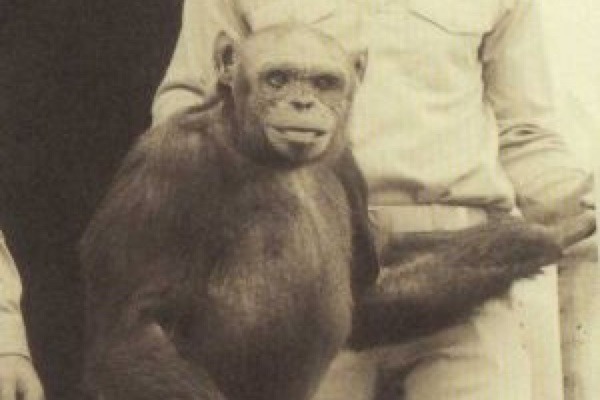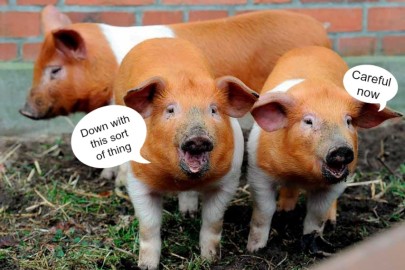Freakish monkey business on today’s visit to the stranger side of Wikipedia – is this perhaps how Wayne Rooney was created?
The Humanzee (also known as the Chuman or Manpanzee) is a hypothetical chimpanzee/human hybrid. Chimpanzees and humans are closely related (sharing 95% of their DNA sequence and 99% of coding DNA sequences), leading to contested speculation that a hybrid is possible.
Geneticists generally use portmanteau words to describe hybrids, with the order of syllables indicating which parent is which. This is important because of genomic imprinting: genes are expressed differently depending on which parent contributed them. The names are formed according the convention first part of sire’s name + second part of dam’s name, except where the result is unwieldy. For geneticists, “Chuman” therefore refers to a hybrid of male chimpanzee and female human, while “Humanzee” or “manpanzee” refers to a hybrid of male human and female chimpanzee (cf. tigon/liger). This distinction is not always followed in popular speech.
Humans have one fewer pair of chromosomes than other apes. Having different numbers of chromosomes is not an absolute barrier to hybridization; similar mismatches are relatively common in existing species, a phenomenon known as chromosomal polymorphism.
The degree of chromosomal similarity between humans and great apes is roughly equivalent to that found in equines. Sterility of any hybrid offspring (mules, zonkeys etc.) is nearly universal (with only around 60 exceptions recorded in equine history).
In 1977, researcher J. Michael Bedford discovered that human sperm could penetrate the protective outer membranes of a gibbon egg. Bedford’s paper also stated that human spermatozoa would not even attach to the zona surface of non-hominoid primates (baboon, rhesus monkey, and squirrel monkey), concluding that although the specificity of human spermatozoa is not confined to man alone, it is probably restricted to the Hominoidea.
By the mid ’00s, research began to suggest that after the last common ancestor of humans and chimpanzees diverged into two distinct lineages, inter-lineage sex was still sufficiently common that it produced fertile hybrids for around 1.2 million years after the initial split.
Ilya Ivanovich Ivanov was the first person to attempt to create a human–ape hybrid. As early as 1910 he gave a presentation to the World Congress of Zoologists in Graz, Austria, in which he described the possibility of creating such a hybrid by artificial insemination. In the 1920s, Ivanov carried out a series of experiments to create a human/ape hybrid. Working with human sperm and female chimpanzees, he failed to create a pregnancy. In 1929 he organized a set of experiments involving ape sperm and human volunteers, but was delayed by the death of his last orangutan.











